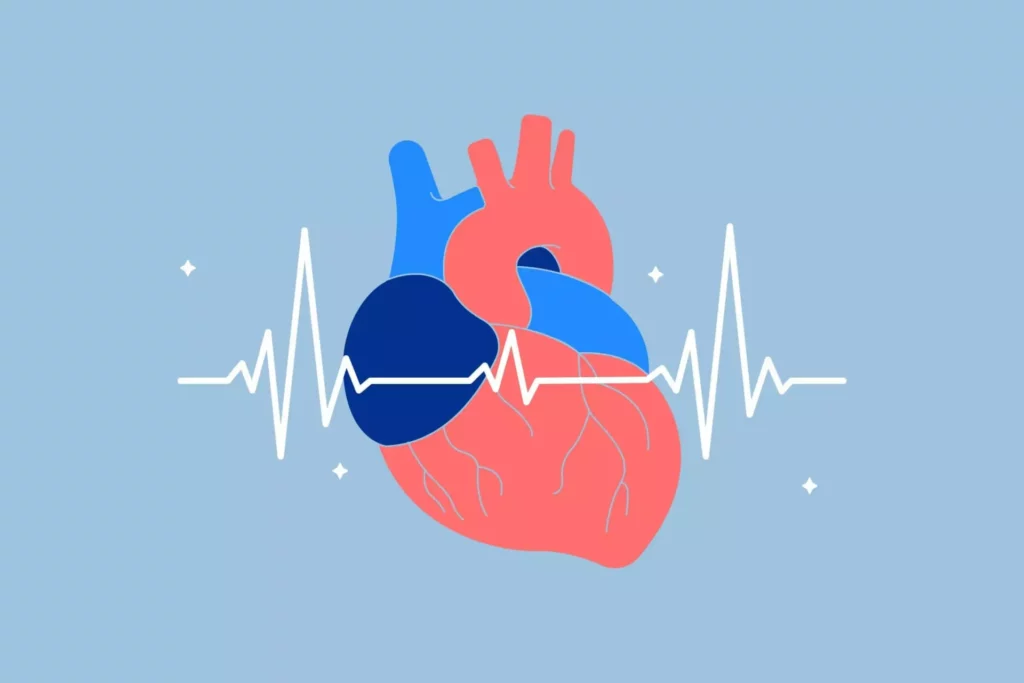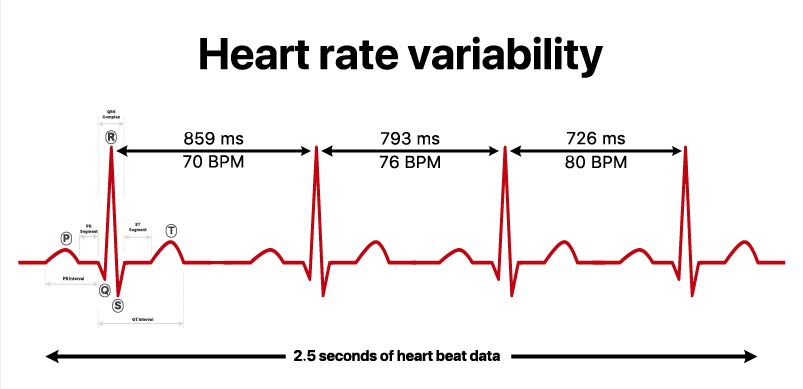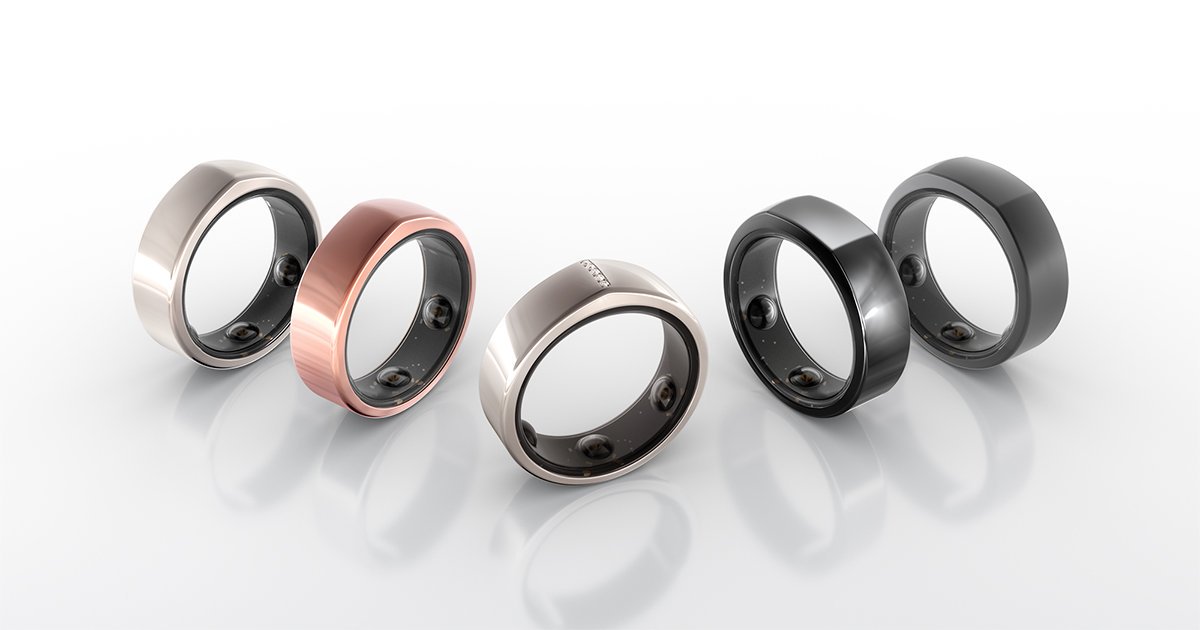The Gold Standard of Data Tracking for Health, Longevity, and Wellness: Heart Rate Variability (HRV).

The Gold Standard of Data Tracking for Health, Longevity, and Wellness: Heart Rate Variability (HRV).
By Laurie Gribschaw PT, DPT, ATC/L, PRC, PN-1
What is HRV?
Heart rate variability is the variation in milliseconds between heartbeats and is a reflection of your autonomic nervous system’s ability to respond to different situations of stress, both positive and negative. This delicate balance between parasympathetic (rest-digest) and sympathetic (fight-flight) directly affects your sinoatrial (SA) node, or the pacemaker of the heart via unconscious or conscious mechanisms.
Image credit: YitzhakNat – Own work + ECG wave from, CC BY-SA 4.0, https://commons.wikimedia.org/w/index.php?curid=121207798
In general, a higher HRV is associated with good overall health, fitness and recovery, while a lower HRV is associated with psychological or physical stress, illness and poorer health. Low HRV scores have robust evidence in the research associated with a myriad of conditions like anxiety/depression, addiction, cardiovascular issues, gastrointestinal issues, reproductive issues, PTSD and a higher mortality rate 3-9.
What affects HRV?
Everything! Factors within your control like sleep hygiene/routine, nutrition, alcohol consumption, activity levels and caffeine or medication can all result in normal fluctuations in your HRV. Additionally, your age, sex assigned at birth, hormonal cycles, emotions, stressors and illness will affect your HRV; every person’s is unique so it’s better to compare to your own trends and averages each day and over time2.
How do you measure HRV?
There are a ton of personal wearables to choose from that all attempt to measure HRV, but not all have been validated against a 5-lead EKG, which is the most sensitive and accurate data collection tool. Personally, I have tried a few different devices and have settled on the Oura ring for it’s validated data collection, affordable monthly fee through the application and easy-to-wear option. Other options include the Polar 10 chest strap that can be synced through the Elite HRV application, or the plethora of wrist watch options. While the Whoop band and other wrist wearables are convenient, they have not proven as accurate in measuring HRV as the Oura and chest straps.
Image credit: Oura Ring
Why care about tracking HRV?
For those of us recovering from injury, dealing with chronic illness, or looking to thrive despite the modern era stressors in life, HRV can be an excellent tool to receive feedback based on our lifestyle choices. These wearable also allow live monitoring to help you find what relaxation tools results in higher HRV (meaning a calmer state): a breathing regimen, going for a walk, or a guided meditation? All of this feedback allows us a greater empowered state to see first hand what power our choices have on our overall health, in addition to pacing fitness and exercise related activites to avoid heading towards burnout. For my personal journey through post-concussion recovery and navigating training through menstrual cycles, it has been extremely valuable in ensuring I get the appropriate rest and recovery to maintain resilience against the day to day stressors.
HRV is a wonderful science-supported tool to promote healthy aging and wellness. If you’re a data driven individual, this can be a great addition to your daily routine to build resilience against your unique stressors in life.
References:
- Campos, M. Heart Rate Variability: How it Might indicate well-being. Harvard Health Blog. December 1, 2021.
- Oura team. Body: What is HRV? Februrary 15, 2023.
- Kristal-Boneh, Estela, Paul Froom, Gil Harari, Marek Malik, and Joseph Ribak. “Summer-winter differences in 24 h variability of heart rate.” Journal of cardiovascular risk 7, no. 2 (2000): 141-146.
- Fang SC, Wu YL, Tsai PS. Heart Rate Variability and Risk of All-Cause Death and Cardiovascular Events in Patients With Cardiovascular Disease: A Meta-Analysis of Cohort Studies. Biol Res Nurs. 2020 Jan;22(1):45-56. doi: 10.1177/1099800419877442. Epub 2019 Sep 26. Erratum in: Biol Res Nurs. 2020 Jul;22(3):423-425. PMID: 31558032.
- U.I.Zulfiqar, et al. Relation of High Heart Rate Variabilty to Healthy Longevity. American Journal of Cardiology 105, no. 8 (April 15, 2010), erratum 106, no. 1 (July 1, 2010): 142.
- Keller A. Litzelman K. et al. Does the Perception that Stress Affects Health Matter? The Association with Health and Mortality. Health Psychol. 2012 September; 31(5): 677-684.
- Lampert R. Bremner, J.D. et al. Decreased heart rate variability is associated with higher levels of inflammation in middle-aged men. Am Heart J. 2008 October; 156(4).
- Kemp A. Quintana D. The relationship between mental and physical health: Insights from the study of heart rate variability. Inter J of Psychophysiology. 2013 Sept; 89 (3): 288-296.
- Pizzoli, S. Marzorati C. et al. A meta-analysis on heart rate variability biofeedback and depressive symptoms. Nature: Scientific Reports. 2021. 11: 6650.
- Dell’Acqua, C., Dal Bo, E., et al. Reduced herat rate variability is associated with vulnerability to depression. J. Affect. Disord. Rep. 1, 100006. (2020).


